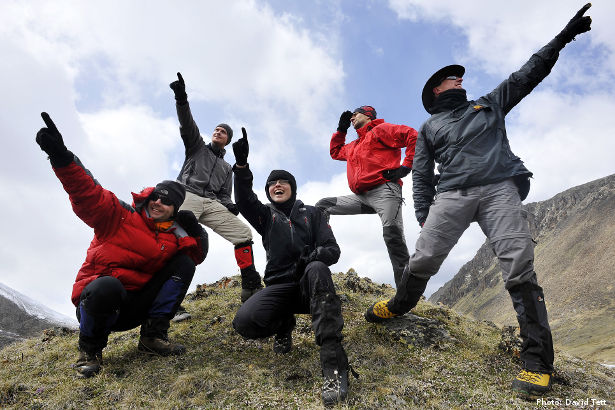
This is a detailed article explaining how you actually go about getting sponsorship for an expedition. It covers the following topics:
1. Who’ll pay for your expedition?
- How likely is it that you’ll get sponsored?
- What is the magic solution?
2. Applying for grants
- Advice for completing grant application forms
- A comprehensive list of expedition grants available
3. Equipment and in-kind sponsorship
- Considering sponsorship in kind
- Is it better to contact manufacturers or retailers?
- The advantages of getting non-expedition products
4. How to make a pitch
- The best way to approach a pitch
- Is it better to make first contact by email or by phone?
- How to sell yourself (but not oversell)
- What to include in a pitch email
5. Writing a sponsorship proposal
- What to include (and what to leave out) of your proposal
- Writing like it’s a bank application
- The key reasons they should sponsor you
6. Being good to your sponsors
- How to give back (and ensure you’ll get sponsored again)
It also includes a sample pitch email (below) and a sample sponsorship proposal (for download), both of which I have used successfully.
[divide]
How To Have An Adventure
This article is part of the ‘How To Have An Adventure’ series:
- Why having an adventure might be easier than you think
- How to have an adventure without spending any money
- Where to get ideas and inspiration for an adventure
- How to actually start planning the logistics of an expedition
- How to get sponsorship for your expedition
- The secret to making sure your expedition definitely happens
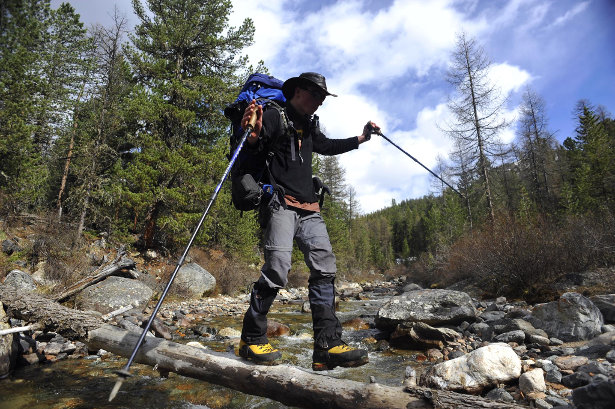
[divide]
1. Who’ll Pay For Your Expedition?
There is no magic solution for getting sponsorship. If there was then I would be in Antarctic right now, not sat at my desk. No company has ever funded any of my expeditions.
Realistically, it is unlikely that anyone is going to pay for your expedition. The sooner you realise this, the better.
I don’t write that to put you off, just so that you know in advance what you’re signing up for. Spending months dreaming of the mountains whilst begging for money, knowing that the fate of your expedition lies in somone else’s hands can be soul destroying. So if you’d rather do cheap trips – like I do – then read my article on how to have an adventure without spending any money.
However, some expeditions – like polar trips and ocean rows – can be prohibitively expensive making sponsorship the only option. And, of course, some people do succeed in attracting financial sponsorship.
This article also covers other forms of sponsorship – like sponsored kit, in-kind donations and expedition grants – which are far easier to get and well worth pursuing. Most of the advice on how to approach sponsors is equally applicable whether you’re asking for cash or equipment. I hope it helps.
Good luck!
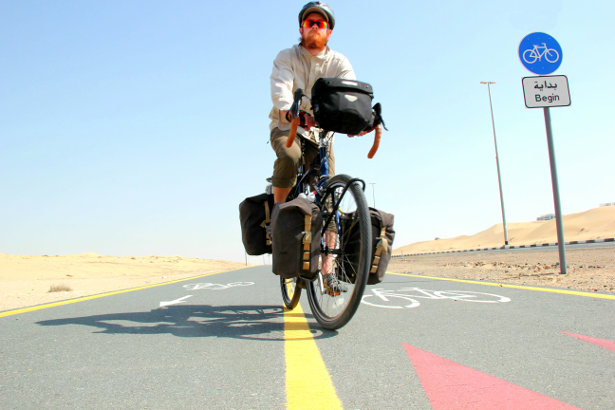
[divide]
2. Applying for Grants
Unless your expedition is going to be really expensive (say, £20,000 or more) then you’d be crazy not to look for expedition grants before putting time into sponsorship.
There are dozens of organisations who have pots of money specifically put aside to fund expeditions. The sums involved typically range from a couple of hundred pounds right up to £10,000 or more. All you need do is check the criteria, fill out a form and wait for a decision. If you’re lucky then you’ll get a cheque in the post. Usually, they ask for little more than some photos and a report afterwards.
I maintain a comprehensive list of expedition grants and even offer my own grant funded by this website’s advertising revenues and public donations.
I’ve applied for and won lots of expedition grants over the years and also sat on decision panels for them. If you’re applying for one yourself then this would be my advice…
Read the criteria
Most expedition grants have specific requirements that applicants and their adventures have to fit. If you don’t meet them then don’t waste your time or theirs in applying.
I’ve read loads of grant applications that have clearly taken hours to prepare but are dismissed within the first two sentences because they’ve clearly not read the criteria properly or have chosen to ignore them. Assuming you are eligible, make a point of emphasising why you’re a perfect fit for them.
Read the questions
Just like the exams you sat at school, answer the question you’re given, not the ones you wanted. Questions can be awkwardand sometimes and you just want to copy-and-paste an answer from another application. But you don’t do yourself any favours. Give them what they want and they’re more likely to do the same in return.
Save your application forms
Always keep a copy of your application form. Download it or take a screenshot if necessary. Mindful of the previous point, you don’t need to reinvent the wheel if every grant is asking for a breakdown of your budget or itinerary. Save yourself time and copy it across.
Don’t ask for too much
If the grant you’re applying offers a fixed sum then you can ignore this advice.
Sometimes it’s tempting to exaggerate or ’round up’ costs in your budget in the hope of getting more money. My experience, from both sides of the application process, is that this doesn’t work and may even reduce your chances of winning. It certainly puts me off giving away money when I people are asking for too much. Just be honest.
Meet the deadline
You know it in advance. Don’t miss it.
Read the pitching advice below
They may have better odds and the process may be more structured but a grant application is still a pitch so read the advice below for some more tips.
See a full list of expedition grants available here
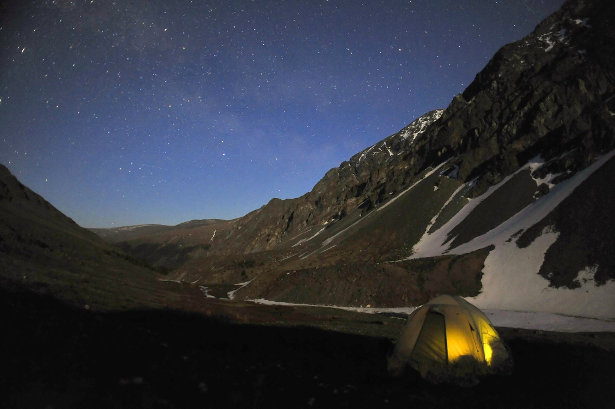
[divide]
3. Equipment and In-Kind Sponsorship
Getting someone to give you money for a trip is really hard. Getting people to give you ‘stuff’ isn’t.
I’ve never had financial sponsorship for my expeditions but I’ve had loads of in-kind donations (e.g. travel insurance, transport, boat support) and sponsored or discounted equipment.
Don’t underestimate the value of in-kind sponsorship
Sometimes the monetary value of these things is not insignificant. When Laura and I cycled around the world, we were given bikes worth over £2,000, at least £1,500 of camping kit and clothing, plus insurance that would have easily cost £500. The whole trip – which we funded ourselves – only cost £5,500 each though. So whilst we were not an attractive prospect for cash sponsorship (round-the-world cyclists are ten-a-penny these days), we got almost the same value out of ‘free’ stuff.
(I should also note that we came very close to winning a share of a £20,000 expedition grant too which just backs up what I’ve written above about sponsorship: grants first, kit second and cash last if you still need it)
Why in-kind is more efficient than cash
The effort-to-results ratio will be far better for in-kind sponsorship requests than cash. So unless you really need vast sums of money, invest your time here first.
If two hours of research and emailing gets you some ‘free’ sleeping bags and camping mats then that’s a pretty good return. Even easier to get are trade price offers (typically 40-50% off the retail price) or other discounts.
Is it better to contact manufacturers or retailers?
If a manufacturer or importer sells their product to a retailer then, in the short term, selling the product directly to you at trade price doesn’t cost them anything. It’s a little more complicated than that because retailers might not be impressed by being cut out of the loop all of the time. But the point remains that the cost to a manufacturer of giving something away is less than it is to a retailer so they’re a much better place to start.
Is it easier to get sponsorship from big companies or smaller ones?
Big companies have bigger budgets and can more easily absorb the cost of a few sponsored products. But they probably also get hundreds of such requests and will already be well known so there’s less of an obvious benefit to you promoting them.
Conversely, a small company giving away its products free may be a bigger ask but they also stand to gain more from any publicity.
Personally, I like the idea of helping out smaller, newer brands but usually feel bad taking their stuff so tend to end up with more stuff from larger companies.
The advantages of asking for non-expedition products
The attraction of sponsoring an expedition often comes from the fact that you’ll be doing something interesting with a company’s product, usually more adventurous than it’s mainstream user.
If a company only makes products that are only used on the type of trip you’re doing then it will be much harder to get them to sponsor you. For example, the companies that make pulks (the sleds you drag in Antarctica) would never make money if they gave them away for free to everyone going to the South Pole. The same goes for expedition rations and specialist expedition insurance polcies.
On the flipside, if you can think of novel bits
Always check Ebay before contacting a company
Before writing to a company to ask them for a sponsored widget, have a quick look on Ebay, Amazon and Google Shopping. If you can pick it up on the cheap then it might just be easier to do that then go through the hassle of emailing loads of companies, putting their logo on your website and sending them all your photos.
There’s no such thing as a free dehydrated lunch
Finally, you might be getting stuff given to you ‘for free’ but you need to give something back. See below for details.
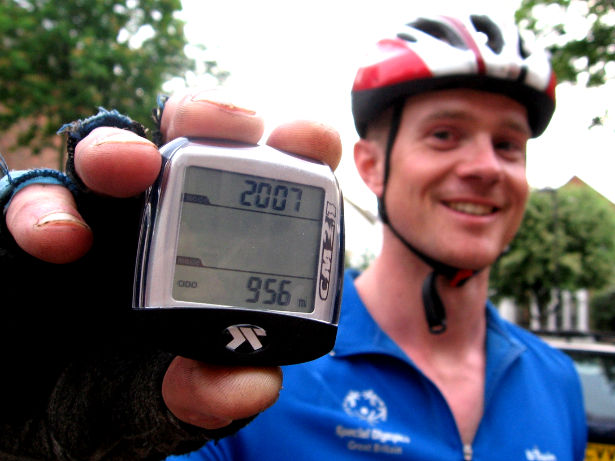
[divide]
4. How to Make a Pitch
Is it better to send an email or pick up a phone?
I’m often asked the best way to approach a sponsor. Should you send an email, use a telephone, write a letter or do something completely different?
My view is that it doesn’t matter. Or, to be more precise, it does matter but you can’t know in advance which method will be best for any given occasion.
Some people will prefer the speaking to an actual person on a phone and appreciate the extra effort. Others will find a phone call out of the blue an annoying interruption to their day and just tell you to email them.
In other words, unless you know the person you’re contacting, you don’t know how they’ll react to different approaches. As such, I’d just advocate choosing whatever you’re most comfortable with or think will work best for you and your idea.
How should you approach making a pitch?
First off, check the company’s online presence and do your research. Lots of companies, particularly outdoors companies, have specific sections on sponsorship or CSR. Read them first. Similarly, check their social media accounts and do a bit of Googling to see if they’ve done aything similar before so you know what you’re working with. Then:
- Get a name: do your damnedest to find a name of someone to whom you can write. It’s much nicer to receive an email that’s been addressed to you and it’s harder for that person to ignore too.
- Be succinct: we’re all busy people and no one else is as interested in your trip as you. If you can’t summarise your trip in a single sentence then try harder.
- Be clear: spell out exactly what it is you are actually going to do. I’ve read a lot of pitches that use general assertions without giving anything specific (e.g. ‘travel across India to get a better understanding of its culture’).
How to sell yourself (but not oversell)
You are trying to impress so you’ve got to make your proposition interesting but don’t be tempted to exaggerate your trip or what you can offer. If you set that precedent then you risk disappointing your sponsors, getting yourself in trouble or just undermining the process for the rest of us.
Are you really the first person to do your trip? If people have done similar stuff before then be upfront and explain why you’re different. Better they know from the outset rather than finding out later and feeling conned.
Are you really going to make a feature length documentary? I film some of my trips with a GoPro but I know I’ll never make a proper film so I don’t claim that I will. In my last round of pitches I just put:
We will be capturing some of the trip in film using our GoPro Hero helmet camera to produce simple videos, publicised through our YouTube channel.
Which we did. Personally, I hate the feeling of not being able to live up to a promise so I’d far rather offer stuff that I know I’m actually going to do.
Think about what actually makes you interesting
Lots of people are doing interesting expeditions. What makes yours different? And, crucially, why would that be of interest to a sponsor?
When we approached sponsors about cycling around the world, we knew our trip wasn’t original. Hundreds of people have cycled around the world. What made us different, however, is that we had a website which received a decent amount of traffic. So, instead of banging on about how inspiring and gruelling our trip would be, I just said ‘we have X social media followers and get Y viewers a month’. Then, I figured, it would be easy for sponsors to decide if we were a good investment or not.
You may or may not have a website but you almost certainly have something of interest. Are you a photographer or filmmaker? Will your trip be of interest to a particular niche of people? Is there a reason you’ll get into the papers or on TV?
What should you include in a pitch email?
For my pitches, I send a brief email with a detailed attachment.
If I just dump all the information into an email then I reckon it’ll be offputting and won’t get read (personally, my heart always sinks when I see long blocks of text appear in my inbox). But if I don’t back up my short email with some substance then it risks looking like I’ve not bothered to put any effort in.
So, you’re first task is to draft an email that has your absolute best bits of information and nothing more. My record for the time taken between sending such an email and having my requested accepted by a sponsor is 28 minutes.
My emails follow a reasonably standard template and are typically just three or four sentences with a few bullet points. There’s a sample of mine below but the key things to cover are:
- What you’re doing
- What you’re asking for
- Why you’re contacting that company specifically
- What’s realistically in it for them
Here’s a sample of one of my emails:
Dear Sam
I run a popular adventure website – www.thenextchallenge.org – and later this year will be setting off with my wife on a 12-month cycle around the world.We’ve been using OKC’s kit for years and are writing to ask if you’d be interested in providing us with two sets of OKC Elite waterproof jackets and trousers.
I’ve attached a detailed proposal of what we could offer in exchange but the key points are:
- We’re a safe bet – We’ve organised over 100 expeditions across all 7 continents. I’m a Fellow of the Royal Geographical Society, Guinness World Record Holder and 2013 Adventurer of the Year finalist.
- We tell a good story – I’m a published author and have written for many national magazines.
- We come with a guaranteed audience – The Next Challenge already receives 500,000 visitors a year and has 10,000 followers across a whole range of social media.
Thank you kindly for your time.
Tim.
Read it again. How much of that pitch was dedicated to describing our expedition?
Six words.
I didn’t think details of a cycling trip would be interesting to a sponsor so I just focussed on our strengths: experience and a website that gets traffic.
You might be thinking: Well, it’s easy for him because he’s got a website and done expeditions before. That’s definitely an advantage I had but there are plenty that I didn’t e.g. a headline grabbing idea, any photography or film-making credentials or any chance of being on TV. Figure out what your strengths are, focus on them and skip over everything else.

[divide]
5. Writing a Sponsorship Proposal
Write like it’s an application to your bank manager
When writing a sponsorship proposal, I keep one simple thing in mind:
If someone was asking me for money, what would I want to know?
It might have taken you ages to work out how you get your supplies to base camp and you may be fascinated by the history of the place you’re visiting but if that information doesn’t add anything useful for a potential sponsor then you should cut it.
Businesses exist to make money and you are asking them to give it away ( even free kit costs them money). That might sound a corporate but you’re looking for corporate sponsorship so that’s how you’ve got to think.
I got a reply from one company I approached saying that they’d stopped their sponsorship scheme because they got a lot applications along the lines of:
Can I have free stuff? I’ll mention something in my local newsletter”
But they went on to say to us that they were going to sponsor us anyway because we’d done a professional presentation that was ‘‘like an application to a bank manager” (which I took as a compliment).
You can see a version of that sponsorship proposal / bank application here
What to include (and what to leave out) of your proposal
Below is an outline of what I typically include in my proposals based on the above sample. It’s just an example but hopefully it will give you an idea of where to start.
1. Summary page
A simple and clear overview of what you’re doing, why you’re writing to them and what’s in the rest of the document.
2. Details of the trip
The length of this section will vary based on how complicated your trip is and how much you’re asking for.
In our case, asking for sponsored kit (typically between £200 and £2,000), it was a single page with one short paragraph of background, two short paragraphs about the trip and a map. As mentioned above, the trip itself wasn’t our key selling point so I didn’t want to put in too much detail.
It may be different for you but, even if it is, don’t get carried away with minutae. Keep it short, simple and easy to follow.

3. Key reasons they should sponsor you
I’ve only recently started doing this but now wonder why I hadn’t always done it. People always think their trip is the most interesting part but it’s not. Companies will want to know what’s in it for them.
Don’t assume they’ll see the magic potential in your idea. Just decide what the best bits you have to offer are and spell them out.
In our case these were:
- Being a safe bet – we wanted to immediately dispel any doubts that this was a pie in the sky application.
- Being good communicators – this was a chance to show off a bit and show that we’d produce good content
- Reaching other people – I’m really proud that I’ve managed to help people have adventures through this website and I hoped this point showed that the trip wasn’t entirely self-centred
- We’ve got a gauranteed audience – this was the big one really and arguably should have been first
- We’re good value for money – we were rarely asking for large contribution (usually kit of a few hundred pounds) but would be blogging about our trip for at least a year
Those are based on the key points I put in my pitch email. But you’ll notice that in my email I just picked three points whereas there five in the document. The email’s just to get people’s attention. The less you write, the more likely they are to read it all.
4. What experience you’ve got
The only reason to include your experience is if you think that it shows your trip is more likely to happen. If it’s not going to do that (i.e. you’ve not got a lot) then don’t draw attention to it.
A difficult or dangerous expedition will obviously need an appropriate amount of experience. If you’ve not got it then you should probably do that first before trying to get sponsored.
Otherwise, just summarise the very best bits of your experience as succinctly as possible in a way that’s easy to understand.
The section in ours is massively overkill for a cycling trip. But we thought we had pretty good expedition CVs so basically used it as an opportunity to show off and demonstrate that we were a safe bet.
5. What you’re asking for
The first thing the person opening your email is going to ask is: What are they asking for?
Don’t be coy. Spell it out and write down exactly what you want.
You’ll notice that even in my brief opening email I’ve specified what I’m after. It’s a bit melodramatic but people fear the unknown and you don’t want to scare a potential sponsor. Better that they know from the outset what’s being ask for, especially if it’s not very much.
When asking for kit, giving the exact item and model you’re after also shows you’ve done your research and know their range.
When asking for a large sum of money, I wouldn’t put that in your email, perhaps not even in the document. That’s because no one is ever going to open their cheque book off the back of a PDF so that shouldn’t be what you’re asking for. You should be asking for a meeting.
Asking for £10,000 is scary and you’ll get an instant no. Asking for twenty minutes of someone’s time is far more reasonable.
Never leave the reader of your document unclear what you want from them. Make it crystal clear what you’re asking.
6. What you’re offering
You’ve said what you want from them, now say what you’ll give them back.
As with everything else above, I’d recommend being specific. Spell out exactly what you will do and back up the claims with some evidence.
- Will you put their logo on your website? On what pages and where? How many visitors do those pages get and how many other logos will they be competing with?
- Will you be taking photos of their products? Do you have a good camera and are you any good at photography? Have your photos been used elsewhere?
- Will you be writing a book? Have you written one before and how many copies did it sell? Do you have a publisher?
- Will you be some newspapers or magazines? Which ones, how often and how many readers do they have? How do you know you’ll be in them?
It is really easy to say that you are going to write a book and produce a feature length prime-time documentary but, more often than not, those things never actually happen. Better work out what you can realistically offer and back it up with some evidence.
Most of my advice has been to keep everything you write short. However, for this part, I think detail’s important. This is the part where a business can judge their return on investment. Show that you’ve really thought about you’re offering. The process will also help you determine for yourself what’s actually in it for someone else.
Click here to view a sample of one of my sponsorship proposals.
You can also see a shorter version of the same information displayed graphically for a presentation.
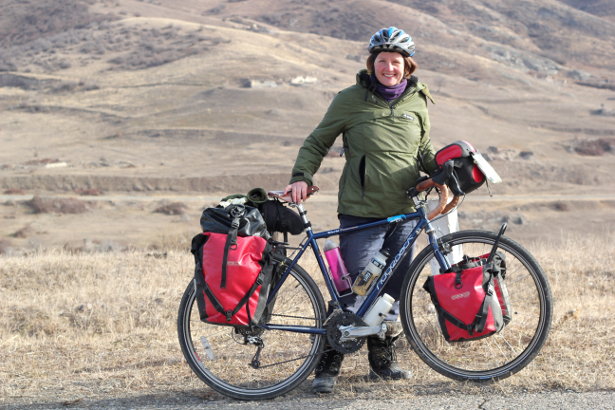
[divide]
5. Being Good to Your Sponsors
Finally, I’ve dedicated a lot of words on how to get sponsorship for an expedition. It would be remiss of me to not at least mention how to keep your sponsors happy.
You have promised something and you need to deliver on it. Hopefully you’ve under promised so you can over deliver. Read through exactly what you said you’d do and plan how you’ll actually do it.
On our round-the-world trip we sent our regular email updates to all of our sponsors. We never said we’d do it but wanted to show our sponsors that we appreciated their support and that their kit was getting used, as well as giving them content to use on their websites and social media if they wanted it.
We soon realised that most of them weren’t bothered. They were evidently happy to just have sent us some kit and left it at that. But we also built really good relationships with some of them. Ridgeback, who gave us our bikes, told us which of our photos they liked best so that we could get more for them. We’re still plastered all over their website and brochure. Lyon Equipment liked the stats I gave them on how many people read my reviews of their kit and have since sent me lots of other stuff to try. And we ended up writing a series of articles for Berghaus and were paid £1,200 (which was over 10% of the entire trip’s cost).
So do what you said you’d do then do a bit more. It’ll make you feel better, make life easier for the next person who contacts the company you kept happy and, you never know, you might even get some extra stuff out of it.
[divide]
For more articles on sponsorship, to apply for my grant and see a full list of expedition grants available, visit my Sponsorship Resources page.
[divide]
How To Have An Adventure
This article is part of the ‘How To Have An Adventure’ series:
- Why having an adventure might be easier than you think
- How to have an adventure without spending any money
- Where to get ideas and inspiration for an adventure
- How to actually start planning the logistics of an expedition
- How to get sponsorship for your expedition
- The secret to making sure your expedition definitely happens
What do you think? Please do add your thoughts below…